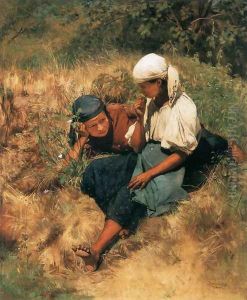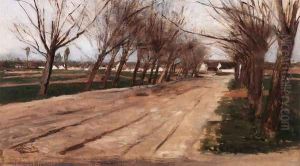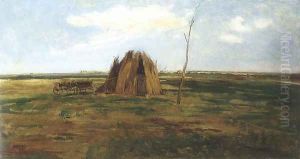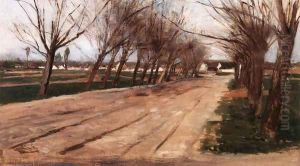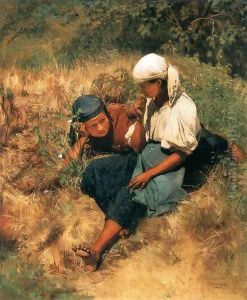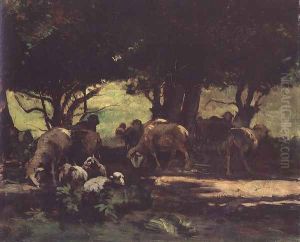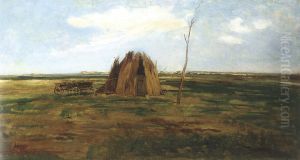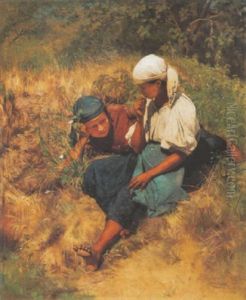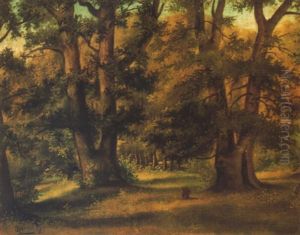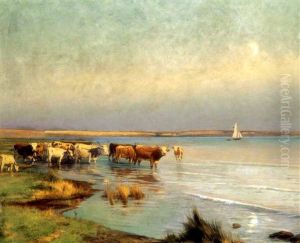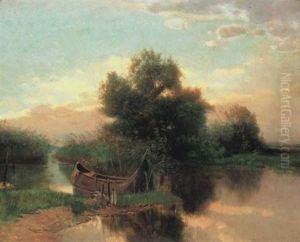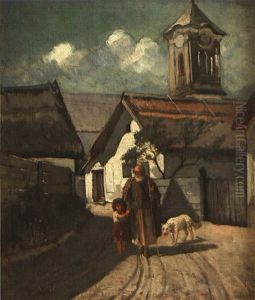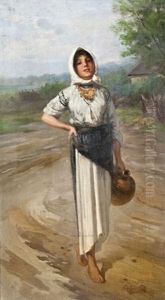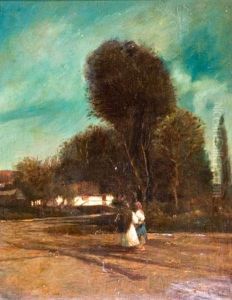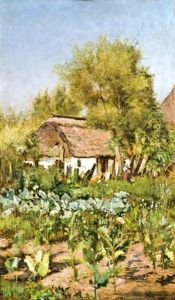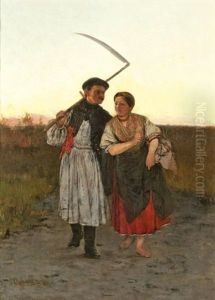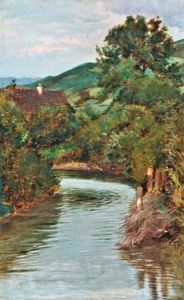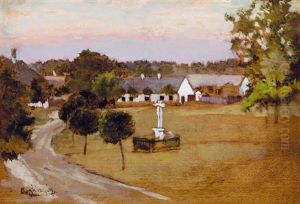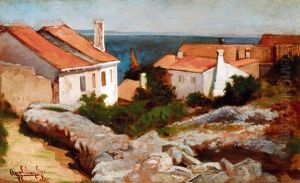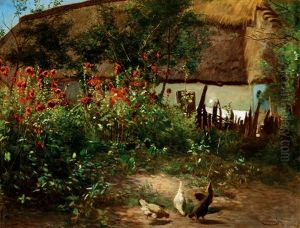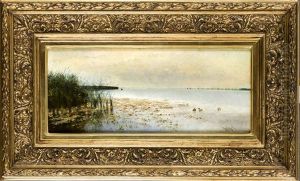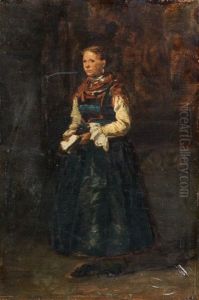Gyula Agghazy Paintings
Gyula Aggházy was a prominent Hungarian painter and art educator, known for his contribution to the genre of landscape painting and for his significant role in the development of art education in Hungary during the late 19th and early 20th centuries. Born on March 6, 1850, in Kisújszállás, Hungary, Aggházy demonstrated a strong inclination towards art from an early age. He pursued his initial art education at the Mintarajziskola (Model Drawing School) in Budapest, which laid the foundation for his artistic career.
After his studies in Budapest, Aggházy continued his education abroad, which was a common practice among European artists seeking to refine their skills and gain wider perspectives. He studied in Vienna, Munich, and Paris, cities that were centers of art and culture in Europe. These experiences exposed him to various artistic styles and techniques, particularly influencing his approach to landscape painting. Aggházy's time in Paris was especially formative, as he was exposed to the works of the Barbizon School and the Impressionists, whose depictions of nature and emphasis on light and color left a lasting impression on his work.
Returning to Hungary, Aggházy became a key figure in the Hungarian art scene. He was not only celebrated for his paintings but also respected for his role as an educator. In 1886, he joined the faculty of the Hungarian Royal Drawing School, which later became the Hungarian University of Fine Arts, where he taught for several decades. His teaching philosophy emphasized the importance of both traditional techniques and personal creative expression, which influenced a generation of Hungarian artists.
Aggházy's own artworks primarily focused on landscapes, capturing the diverse beauty of Hungary's countryside. His style evolved over the years, showing influences from the realism of his early training as well as the more loose, expressive brushwork inspired by Impressionist techniques. He had a particular talent for depicting the changing moods of nature, from tranquil scenes of rivers and forests to dramatic portrayals of stormy skies and sunlit clearings.
Throughout his career, Gyula Aggházy exhibited his work widely, both in Hungary and abroad, earning accolades and recognition for his contributions to art. His legacy is preserved not only through his paintings but also through his impact on art education in Hungary. Aggházy passed away on October 21, 1919, in Budapest, but his influence on Hungarian art and culture continues to be celebrated today.
